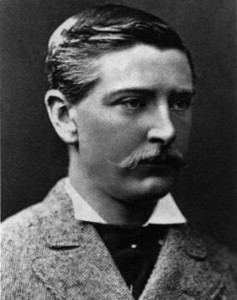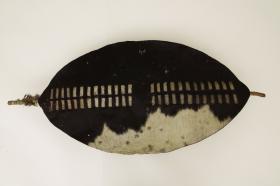A father’s tribute? The war trophies of Lieutenant Nevill Coghill VC
Published in 18th–19th - Century History, Features, General, Issue 5 (Sep/Oct 2009), Volume 17 In 1879 Sir John Joscelyn Coghill of Drumcondra visited the Museum of Science and Art in Dublin (now the National Museum of Ireland) to donate a number of ethnographic items gathered by his eldest son, Lieutenant Nevill Coghill. The collection was made up of tribal military equipment from Southern Africa, captured by Nevill the previous year during the Gaika and Galeka war. The tribes of the region carried distinctive weaponry, including short stabbing spears or assegai and tough oval cowhide shields. These tools of war were largely developed and utilised by one distinct tribal group, the Zulu, who in 1879 sent shockwaves through the British Empire and irrevocably changed the lives of the Coghill family.
In 1879 Sir John Joscelyn Coghill of Drumcondra visited the Museum of Science and Art in Dublin (now the National Museum of Ireland) to donate a number of ethnographic items gathered by his eldest son, Lieutenant Nevill Coghill. The collection was made up of tribal military equipment from Southern Africa, captured by Nevill the previous year during the Gaika and Galeka war. The tribes of the region carried distinctive weaponry, including short stabbing spears or assegai and tough oval cowhide shields. These tools of war were largely developed and utilised by one distinct tribal group, the Zulu, who in 1879 sent shockwaves through the British Empire and irrevocably changed the lives of the Coghill family.
In 1879 Nevill was serving with the 1/24th (2nd Warwickshire) Regiment, part of a British force tasked with invading the Kingdom of Zululand. On 11 January his column of some 4,200 men, under the command of Lord Chelmsford, advanced into Zululand and set up their camp at the foot of Isandlwana Mountain. In the early hours of 22 January Chelmsford received word that a Zulu force had been spotted; assuming it to be the main Zulu army of some 25,000 men, he left camp with the majority of his strength to locate and engage them. Nevill should have travelled with this force; he was serving as orderly officer to Colonel Glyn, who went with Chelmsford, but a severe injury to his knee restricted him to camp. The stage was set for one of the greatest British military catastrophes of the Victorian era.
The force that Chelmsford was chasing was a decoy, designed to draw him away from camp. In his absence the main Zulu army descended on the Isandlwana position, quickly overrunning the 1,700 men manning it. In the chaos a handful of soldiers, including Nevill, managed to escape down what has become known as ‘Fugitive’s Trail’. Pursued by the victorious Zulus over miles of rough ground, he crossed the swollen Buffalo River on his horse, only to note that a fellow lieutenant, Teignmouth Melvill, was struggling in the water attempting to save the regimental colours. Nevill returned to rescue him and the pair succeeded in reaching the far bank, although Nevill’s horse was killed and the colours were lost. The two officers probably thought that they had made good their escape, but the Zulus continued the pursuit. Encumbered by his injury, 27-year-old Nevill was overtaken and killed, side by side with Lieutenant Melvill.

A Zulu shield, war trophy of Lieutenant Nevill Coghill (top), donated in 1879 by his father to Dublin’s Museum of Science and Art. (National Museum of Ireland)
Following a campaign in which Sir John Joscelyn Coghill was heavily involved, Nevill and Lieutenant Melvill were posthumously awarded the Victoria Cross in 1907. The context of Sir John’s donation brings into focus the human side to these famous events, immortalised in the film Zulu Dawn. The objects were presented only a short time after news of the defeat at Isandlwana and his son’s death reached Ireland, and were surely intended as a tribute to his eldest boy’s service. One can only imagine the meaning they held for the Coghill family. HI
Damian Shiels is a director of Headland Archaeology (Ireland) Ltd.
















